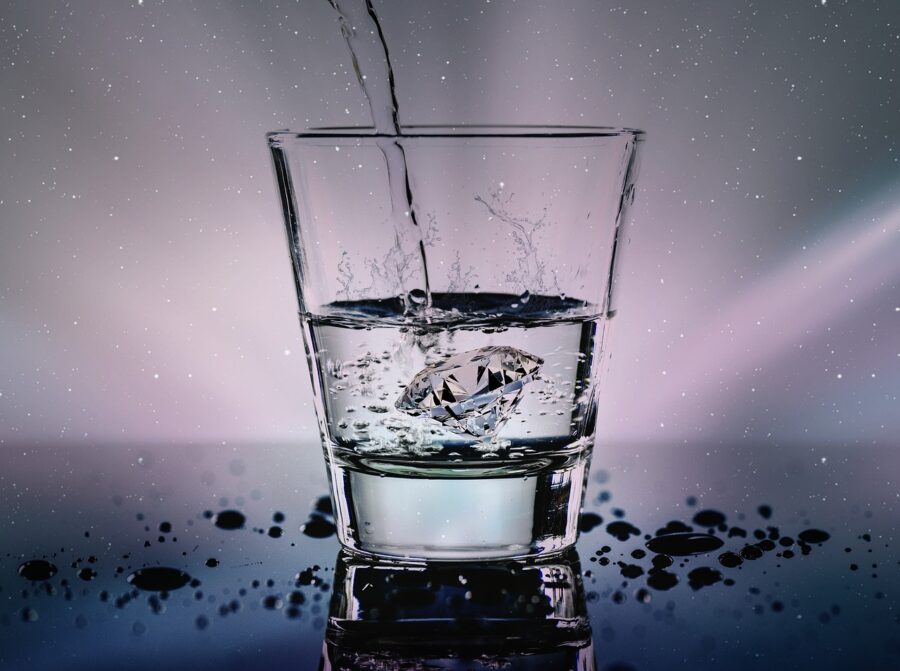Feeling thirsty is the body’s way of reminding you to rehydrate. Because the body needs water for survival, growth, and several other functions, it’s necessary for us to drink water constantly.
Water can be sourced from any and everywhere around us. But are all sources of water fit for drinking?
In this article, you’ll find out the different types of water you can drink and those you should stay away from. But first, why drink only clean water?
Reasons To Drink Clean Water
Here’s how we benefit from drinking clean water:
Reduced Health Risks
Like other health tips given to you by professionals, including regular exercise and eating healthy foods, drinking clean water can give you better immunity. Having a clean water source protects you from many health risks associated with drinking contaminated water.
You Stay Hydrated And Energized
Clean water refreshes the body and energizes the muscles. You get a bigger energy boost from drinking clean water than from drinking bad water contaminated with heavy metals and chemicals that damage body cells.
You Lose Weight
Drinking high-quality water helps with weight loss. Having a glass of water before a meal creates a sense of fullness that makes you eat less than you usually would.
Your Skin Looks Better
Not drinking enough water makes your skin dry and wrinkled. Drinking good water can help you get fresher, younger and smoother skin.
Types Of Water You Can Drink
Here are some types of water that you can drink and what you need to know about them:
- Mineral water: Mineral water is obtained from underground water sources and rich in elements like calcium, potassium, and magnesium. It provides the body with special health benefits, which explains why it’s packaged and sold at a high cost.
- Spring water: Spring water is collected and bottled from springs and even glaciers. Spring water is natural water, clean and free from harmful particles and contaminants. It’s also very rich in essential minerals. Before spring water is bottled and sold, it goes through a series of purification processes to remove any lingering debris, toxins, and unwanted particles.
- Purified water: The safest and healthiest type of water to drink is purified water. Water can be purified through processes like ultrafiltration. These processes rid water from any source, well or tap, from all its impurities and make it fit for drinking. Some technologies add an adequate amount of essential minerals to purified water to make it healthier.
- RO purified water: RO purified water is the most common type of purified water. With it, you get pure, fresh, and healthy drinkable water.
Types Of Water You Should Not Drink
Not all water is healthy. Water from certain sources can be unpleasant, and even downright dangerous for your health. These are the types of water you should not be drinking:
- Tap water: This is the water you get directly from your kitchen faucet. Tap water is obtained from rivers or dams, stored in water reservoirs, and then treated and distributed to residential areas for use. Most tap water is not 100 percent safe to drink. Despite being treated by the authorities, it can get contaminated as it travels along distribution pipes down to your home. For tap water to be safe for drinking, it must first be purified using a home filtering system. If you want to get a constant supply of drinkable water right in your home, you should be looking at installing a water filter or purifier.
- Well water: Most people living in rural areas get their water from wells. Unlike spring water or mineral water, well water is completely free to use. It doesn’t have to be packaged or sold in a bottle. But the downside is that it requires purification; lots of it. Well water is usually infested with millions of bacteria and filled with many unwanted particles that are bad for your health. It may also contain poisonous heavy metals like lead. The only way to safely drink well water is by filtering it.
- Distilled water: Distilled water is water that has been purified by distillation. The distillation process involves boiling water into vapor, trapping the vapor, and then condensing it into liquid state for drinking. Distilled water is free from toxins and unwanted particles, making it one of the purest water sources. Despite being so pure, distilled water isn’t a good source for drinking. The distillation process is effective at removing toxins, but it also removes essential minerals. Distilled water has no “flavor” and many people describe it as being “bland” to the taste. Being mineral-deficient, distilled water tries to balance itself by pulling minerals from whatever it touches – even your teeth. You can find out more about distilled water and its contents like fluoride at best-osmosis-system.com.
- Hard water: Hard water contains high amounts of minerals like calcium, magnesium, carbonates, and bicarbonates. Iron, alumina, and manganese may also be present. While hard water isn’t bad for your health, it can be rather unpleasant to drink. You can improve on hard water by using water softeners or conditioners.
Identify The Type of Water That’s Best For You
The water you drink should be free from contaminants and impurities. It should also contain the minerals that your body needs. Using this article as a guide, you can easily identify the type of water that’s best for you.
